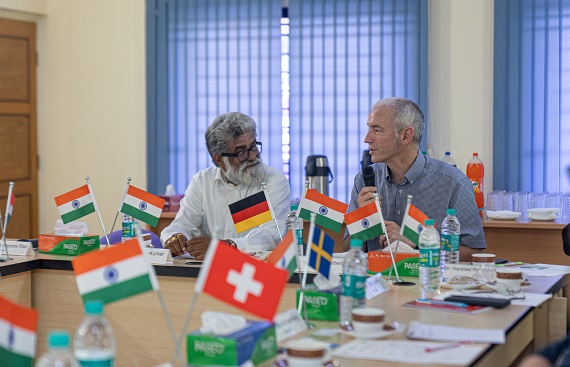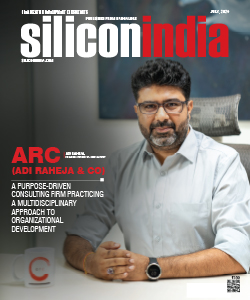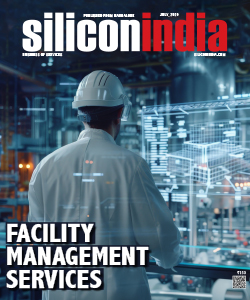International Energy Agency Bioenergy (Task 37) plans technology collaborations in India
By
siliconindia | Friday, 12 May 2023, 04:03:16 PM IST

Agricultural activities are responsible for contributing 29% of the world's greenhouse gas emissions. Methane, a potent greenhouse gas, is the primary contributor to the formation of ground-level ozone, which is a hazardous air pollutant. Exposure to ground-level ozone leads to approximately 1 million premature deaths annually. Over a 20-year period, methane is 80 times more effective at warming the Earth's atmosphere than carbon dioxide. Additionally, methane is released during the anaerobic digestion of biomass decay in landfills. Today societies and economies produce increasing amounts of Lignocellulosic Agriculture Residue (LCAR) making this problem even more acute and a major factor in global warming.
To address this issue, we can utilize LCAR to generate grid-grade natural gas, which offers various benefits for sustainable development. While biogas and biomethane are distinct products with different applications, both are derived from a range of organic feedstocks that are currently utilized, however, the issue of LCAR is hardly addressed. Producing and utilizing LCAR to generate grid-grade natural gas aligns with the concept of a more circular economy, resulting in reduced emissions, enhanced waste management, and increased resource efficiency. Moreover, the farming community producing natural gas and linking it to the national gas grid provides an opportunity to involve rural communities and industries in the transition toward a more sustainable energy sector and a cooler planet.
Task 37 is an international working group within the International Energy Agency Bioenergy (IEA Bioenergy) that focuses on the anaerobic digestion (AD) of biomass feedstocks, including agricultural residues (such as manure and crop residues), energy crops, organic-rich wastewater, the organic fraction of municipal solid waste (OFMSW), and industrial organic wastes. The primary objectives of Task 37 are the production of biogas for direct use in heat and power generation, the upgrading of biogas to biomethane, and the use of biogas/biomethane for balancing electricity grids. Additionally, the process produces high-quality digestate that can be used as biofertilizer.
The International Energy Agency Bioenergy (IEA Bioenergy) Task 37 conference is currently being held at the Green R&D Centre of Hindustan Petroleum Corporation Ltd in Bangalore. Bioenergy experts from various countries are in attendance to discuss the R&D efforts required to develop technically viable biomass-to-bioenergy conversion technologies. The delegates are also responsible for collaborating with technology providers from different countries to promote the adoption of biomass-to-energy technologies for public use, reduce greenhouse gas emissions, generate revenue from biomass, and eliminate organic waste pollution.
IEA chose to visit the Organization De Scalene Foundation campus in Bangalore to understand and witness the operation of this revolutionary technology that has the potential to transform the energy sector, reduce greenhouse gas emissions, and mitigate global warming and climate change. The last day of the conference was held at the Scalene campus on May 11th, 2023, to engage in technical discussions and explore the possibilities of long-term collaboration between India and other countries in this specialized area.
Speaking at this interaction Dr. Ing. Jan Liebetrau, Head of Department, Rytec GmbH, Germany said "The issue of global warming, caused by the emission of greenhouse gases, has now reached epidemic proportions and requires urgent attention. LCAR is a relevant contributor to these emissions, making it a key area of focus for the Task 37 team. Our aim is to facilitate technology collaboration among member countries, with a particular interest in partnering with India, given its status as a major agricultural producer and an engineering powerhouse. We are very impressed with the innovative technologies built by Hindustan Petroleum Corporation and Organisation De Scalene Foundation in the area of LCAR to Natural Gas."
Other members of the IEA Bioenergy group also highlighted the significance of Task 37 in mitigating the impact of Lignocellulosic Agriculture Residue (LCAR) induced greenhouse gases on the planet and explore potential technical collaborations with India, including technologies from HPCL and Scalene.
According to Dr. Harshad Ravindra Velankar, Chief Manager - Bioprocess Division, HPCL said “Since its establishment in 2016, the HPCL R&D centre has conducted pioneering research with a strong focus on renewable energy. One area of unique work we have undertaken is in the pre-digestion of biomass. We are delighted to explore possibilities of collaborations with Scalene on how we can further develop this area to focus on renewable natural gas production, utilizing their unique technology."
Given that the agricultural sector is the largest contributor to greenhouse gas emissions, it is critical to eliminate these emissions as soon as possible by collaborating with the right technology provider. In this context, the Scalene Energy Research Institute and its commercial wing, Scalene Energy Water Corporation Limited, have developed a unique technology called Microbe Incubated Bio Reaction (MIBR) that breaks down lignin, the second-longest carbon chain after crude oil, into grid-grade natural gas.
Speaking at the conference Dr. Rajah Vijay Kumar, Chairman and Chief Scientific Officer, Organisation De Scalene commented "We are delighted to host IEA Bioenergy and HPCL delegates to our campus to discuss the pressing need to tackle global warming and climate change. We can learn a lot from nature, including how natural gas is produced deep within the earth's surface. Using these observations, Scalene has developed several unique technologies, such as Microbe Incubated Bio Reaction (MIBR) reactors that utilize bio rings, carbon dioxide rebreathers, specialized refining techniques, and proprietary technology for storing organic natural gas. Our technology is able to produce Organic natural gas with 98% purity of methane and calorific value of natural gas making it suitable for Domestic Cooking Fuel, Automotive Fuel, Industrial Heating, Welding and Power Generation."
About IEA Bioenergy
The IEA Bioenergy is leading a new era of international energy co-operation. It works with governments and industry to shape a secure and sustainable energy future for all. The IEA is at the heart of global dialogue on energy, providing authoritative analysis, data, policy recommendations, and real-world solutions to help countries provide secure and sustainable energy for all.
The IEA was created in 1974 to help co-ordinate a collective response to major disruptions in the supply of oil. While oil security remains a key aspect of our work, the IEA has evolved and expanded significantly since its foundation.
About IEA Technology Collaboration Programme
The Technology Collaboration Programme aims to support international teams of experts in advancing various energy technologies and related issues. These collaborations are independent and enable governments and industries worldwide to lead projects and initiatives in the energy field. The experts involved in these collaborations work towards enhancing research, development, and commercialization of energy technologies while aligning with the IEA Shared Goals of energy security, environmental protection, and economic growth. These collaborations have a global reach and engagement, making them a unique asset to the global transition towards a cleaner energy future. The diverse analytical expertise within the Technology Collaboration Programme further strengthens its impact.
HPCL R&D Centre
Hindustan Petroleum Corporation Limited has set-up its prestigious 'HP Green R&D Centre' at Bengaluru, India in 2016 with an objective to develop innovative & path breaking technologies and products. The Centre has been set-up in eastern fringes of Bengaluru, the garden city of India, and is located 15 km from ITPL / Whitefield. HP Green R&D Centre is being built in phases in a campus of 104 acres. The Phase–I of the R&D centre has laboratories in the areas of FCC / RFCC, Hydroprocessing, Catalysis, Bioprocesses, Crude Evaluation & Fuels Research, Analytical, Process Modelling & Simulation and Nano Technology which are built with state-of-the-art research facilities / equipment. In April 2022, R&D Centre inaugurated 7 new Labs under Phase-II i.e., Petrochemicals & Polymers lab, Engine Testing lab, Tribology lab, Corrosion Studies lab, Novel Separations lab, Residue Upgradation lab and Battery Research lab. The R&D centre is recognized by the Department of Scientific and Industrial Research (DSIR) and has collaborations with research institutes in India and abroad. Currently, HPCL R&D has a dedicated team of 126 officers (scientific & support) and 133 fixed term associates (scientific).
HPGRDC – ACHIEVEMENTS
HPCL R&D Centre has Made Major Technical Accomplishments in Terms of Developing & Commercializing Novel Technologies and Products in Refineries which Led to Significant Cost Advantages and Efficiency Improvements in HPCL.
Read More News :
Sequoia Capital India makes 2nd semiconductor investment in country
Noise clocks Rs 2,000 cr in revenue in FY23 with 100% growth



